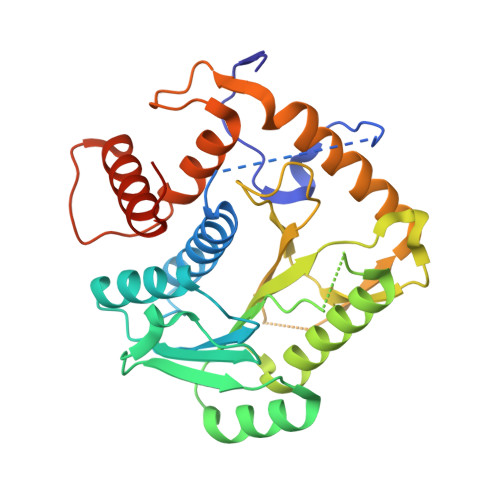Discovery and structural characterization of monkeypox virus methyltransferase VP39 inhibitors reveal similarities to SARS-CoV-2 nsp14 methyltransferase.
Silhan, J., Klima, M., Otava, T., Skvara, P., Chalupska, D., Chalupsky, K., Kozic, J., Nencka, R., Boura, E.(2023) Nat Commun 14: 2259-2259
- PubMed: 37080993
- DOI: https://doi.org/10.1038/s41467-023-38019-1
- Primary Citation of Related Structures:
8B07, 8CEQ, 8CER, 8CES, 8CET, 8CEV, 8CGB - PubMed Abstract:
Monkeypox is a disease with pandemic potential. It is caused by the monkeypox virus (MPXV), a double-stranded DNA virus from the Poxviridae family, that replicates in the cytoplasm and must encode for its own RNA processing machinery including the capping machinery. Here, we present crystal structures of its 2'-O-RNA methyltransferase (MTase) VP39 in complex with the pan-MTase inhibitor sinefungin and a series of inhibitors that were discovered based on it. A comparison of this 2'-O-RNA MTase with enzymes from unrelated single-stranded RNA viruses (SARS-CoV-2 and Zika) reveals a conserved sinefungin binding mode, implicating that a single inhibitor could be used against unrelated viral families. Indeed, several of our inhibitors such as TO507 also inhibit the coronaviral nsp14 MTase.
Organizational Affiliation:
Institute of Organic Chemistry and Biochemistry AS CR, Prague 6, Czech Republic.















